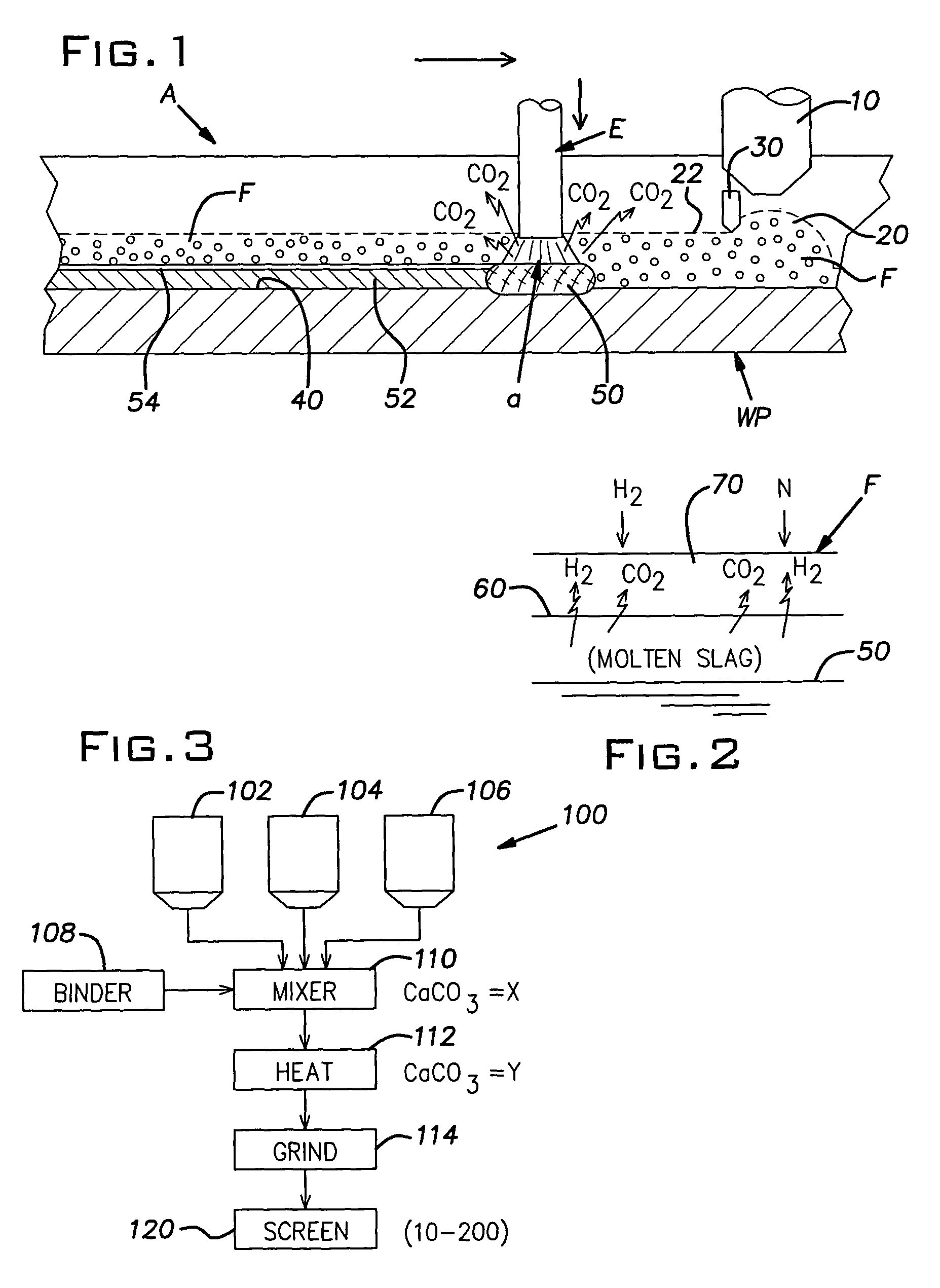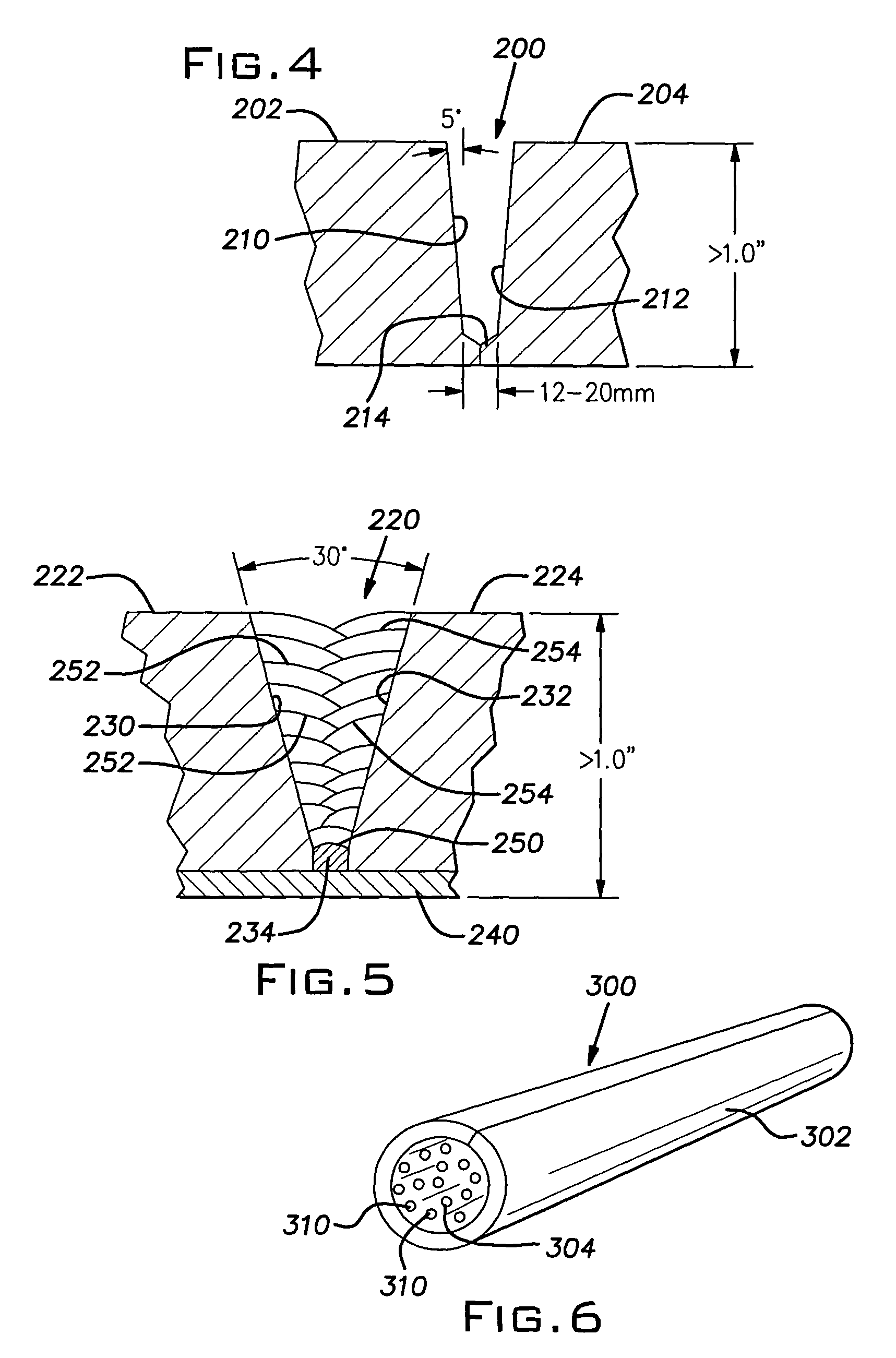Submerged arc flux
a technology of submerged arcs and fluxes, which is applied in the direction of metal-working equipment, soldering equipment, manufacturing tools, etc., can solve the problems of flux that creates a slag that does not easily release from the molten metal bead, inclusions, and high diffusible hydrogen in the weld metal
- Summary
- Abstract
- Description
- Claims
- Application Information
AI Technical Summary
Benefits of technology
Problems solved by technology
Method used
Image
Examples
Embodiment Construction
[0024]In submerged arc welding, the electric arc from an electrode is buried in a granular flux through which the electrode is moved in a plowing action as schematically illustrated in FIG. 1. The invention is the provision of a novel flux F usable in a standard submerged arc welding process, specifically a process A for welding in a deep narrow groove. In process A, electrode E having any chemical composition required for the welding process creates an arc a between an advancing electrode E and workpiece WP. The electrode extends downwardly into granular flux F provided from a standard flux feeder 10. Initial flux pile 20 of granular flux F is leveled in area 22 by dam 30 moving with electrode E and feeder 10 in the direction indicated by the arrow in FIG. 1. Level flux area 22 is an operating pile of granular flux through which electrode E plows as it is melted by arc a to deposit in the bottom groove 40 a molten metal puddle 50. As electrode E moves to the right, molten metal pud...
PUM
| Property | Measurement | Unit |
|---|---|---|
| thickness | aaaaa | aaaaa |
| thickness | aaaaa | aaaaa |
| density | aaaaa | aaaaa |
Abstract
Description
Claims
Application Information
 Login to View More
Login to View More - R&D
- Intellectual Property
- Life Sciences
- Materials
- Tech Scout
- Unparalleled Data Quality
- Higher Quality Content
- 60% Fewer Hallucinations
Browse by: Latest US Patents, China's latest patents, Technical Efficacy Thesaurus, Application Domain, Technology Topic, Popular Technical Reports.
© 2025 PatSnap. All rights reserved.Legal|Privacy policy|Modern Slavery Act Transparency Statement|Sitemap|About US| Contact US: help@patsnap.com



